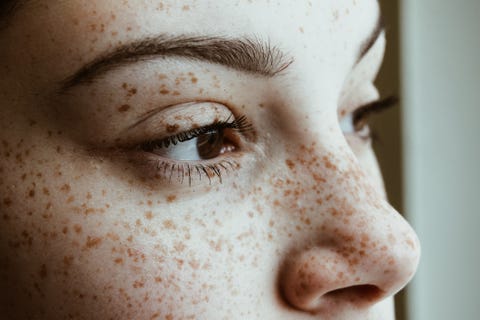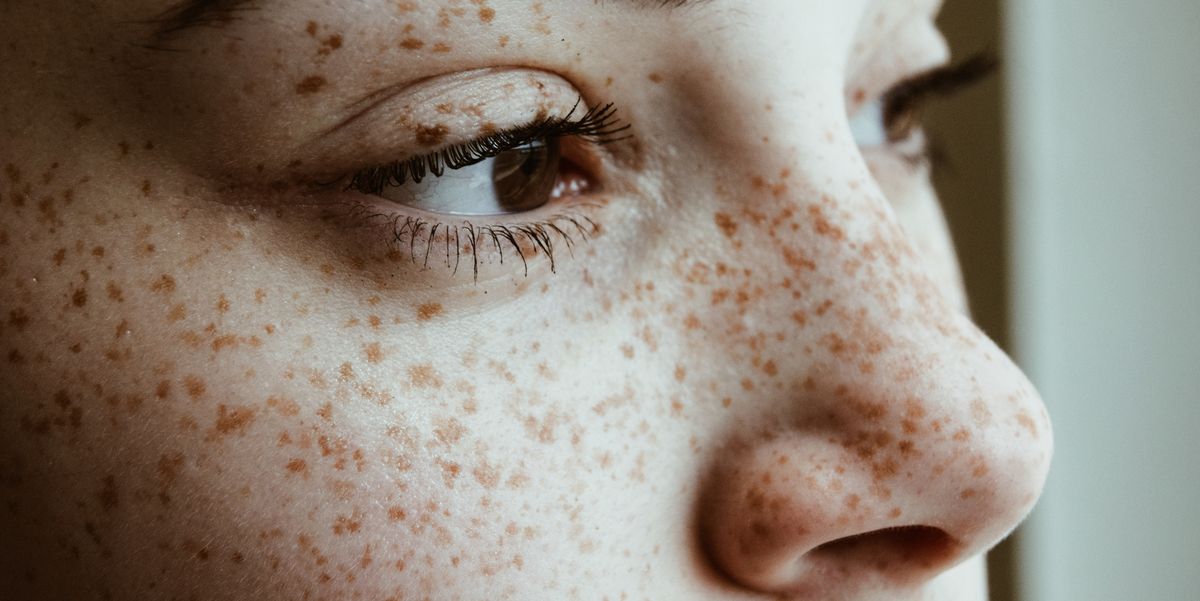
Talia Ali / EyeEmGetty Images
First things first, freckles are normal. Along with hair makeovers and baby bumps, the barefaced freckle reveal has become an Instagram moment. Christina Aguilera, Lady Gaga, Kylie Jenner, and Bella Hadid have all shared theirs to fanfare. Kesha even used her reveal to send a message of self-love in the new year.
This content is imported from Instagram. You may be able to find the same content in another format, or you may be able to find more information, at their web site.
A smattering of freckles feels youthful and sweet, like the signature of a pretty make-under, but, one wonders, where do they come from? “Freckles are a result of melanin overproduction as your skin tries to protect you from the sun,” explains Los Angeles–area dermatologist Annie Chiu, MD. When cells called melanocytes absorb UV light, they produce more melanin as a defense mechanism—hence, tanning. Within freckles, melanocytes are more active, making these areas even darker. Why do some people have freckles while others don’t? Usually it’s due to a specific gene common in redheads, according to New York City dermatologist Carlos Charles, MD, but they can appear on any skin tone, even those without the gene. Below, Dr. Charles and Chiu break down all your freckle-related questions, including how to spot a cancerous growth versus a sun spot.
Here’s What Your Freckles Are Trying to Tell You
This is key: Freckles themselves are not unhealthy, but they are a signal that your skin may be at risk. “People with freckles tend to have lighter skin, and those with lighter skin tend to be more prone to skin cancer because they have less natural protection from UV,” Chiu explains. Of course, using sunscreen is important for any skintone; the presence of freckles just ups the ante.
No matter your genes, spots at risk for cancer could be mistaken for harmless freckles if you don’t look carefully. The average freckle is reddish brown and fades in the winter, when skin gets less sun exposure. “Marks called sunspots, similar to freckles, are flat and pop up in areas where skin is most exposed, usually later in life,“ Chiu says. And moles, the spots most susceptible to turning cancerous, tend to be darker and raised, and can show up anywhere on the body—even in areas you can’t see easily. If you’re unsure, make an appointment with a dermatologist. Chiu recommends an annual skin check of your entire body. “But as long as you protect yourself, do not fear the freckle,” Charles says.
While freckles and sunspots don’t generally become cancerous, moles can, and it can be hard to distinguish between them. Keep an eye on all your spots, and if you notice any of these five signs, see a dermatologist.
Asymmetry
When the halves of a spot don’t match up, it may be a sign of irregular cells.
Border
Malignant moles tend to have uneven, notched, or bumpy edges.
Color
Inconsistent color in the mole signals a possible issue.
Diameter
Anything bigger than 1/4 inch could be cancerous.
Evolving
It’s important to report any changes in size, shape, color, or elevation to a doctor.
This article first appears in the June 2019 issue of ELLE.
This content is created and maintained by a third party, and imported onto this page to help users provide their email addresses. You may be able to find more information about this and similar content at piano.io
